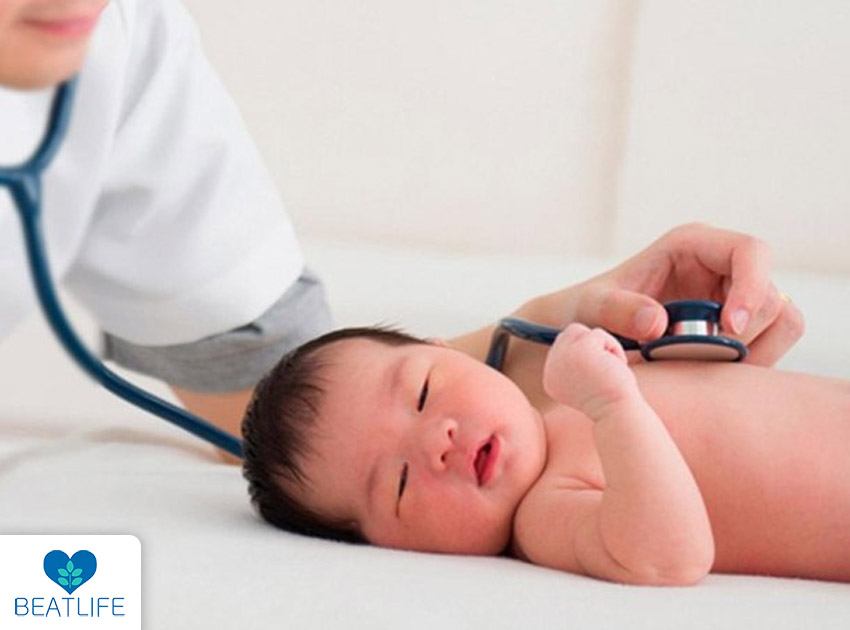The normal heart rate, or the resting heart rate, is an essential measure which can indicate the cardiovascular health. It can provide useful information about general heath and fitness level. Heart rate is the number of heart beats per minute (bpm). It can change depending on number of factors, such as age, physical activity, and general health. Understanding the normal heart rate for various age groups can be helpful in monitoring the heart health and detecting any potential abnormalities.Here, we will explore what is considered normal heart rates for deferent age groups. We also introduce a CPR device made available by BEATLIFE which can assist in monitoring the heart rate and provide thorough feedback on the heart rate at every stage of life.

Contents
What is Normal Heart rate for different age groups?
Here is a general guideline for normal heart rate in different age groups:
1. Infants (0-12 months):
The normal heart rate among infants, which refers to babies up to 12 months old, range between 100 and 160 beats per minute. Their heart rate gradually lowers as they get older.Remember that different factors such as crying, feeding, or physical activity might cause a momentary change in the heart rate; Therefore, temporary change in the heart rate caused by mentioned factors is not alarming.With all the considering, if there are some censers about the baby’s heart rate, it is recommended to consult with a healthcare professional for more accurate assessment.
2. Toddlers (1-3 years):
Toddlers, which refers to children between 1 to 3 years old, typically have a normal heart rate between 80 and 130 beats per minute.Similar to infants, toddlers’ heart rate gradually decreases as they become older. However, individual variations are common since different factors such as physical activity or excitement can temporarily elevate their heart rate. In the case of any abnormalities, consult with a healthcare professional.
3. Preschoolers (3-5 years):
The normal heart rate for preschoolers, which are typically referred to children between the ages of 3 and 5 years old, vary between 70 and 110 beats per minute. As children grow, their heart rate gradually approaches the range of adults.However, different activities influence their heart rate. Any concerning abnormality in the heart rate should be taken seriously and it is advised to seek medical help for more accurate examination.
4. School-age children (6-12 years):
The normal heart rate for school-age children (between 6 and 12 years old) often ranges between 60 and 100 beats per minute.Although factors like physical activity or excitement momentarily affect the heart rate, consult with a medical professional in case of any abnormal change.
5. Teenagers (13-18 years):
The normal heart rate for teenagers, typically referred to individuals between the ages of 13 and 18, varies based on their age, sex, and physical activities. On average, teenagers have a normal heart rate ranging between 60 and 100 beats per minute.The normal heart rate for teenagers approaches the range of adults, as they grow older. The heart rate can momentarily increase due to various factors such as physical exercise or emotional states.
6. Adults (18-65 years):
The normal heart rate among adults can vary based on a number of variables, including age, gender, level of physical fitness, and general health. On average, their normal heart rate is between 60 and 100 bpm.However, individual variations are common; Since the heart rate might momentarily change in response to stress, physical exercise, or medications.Regular exercise and a healthy lifestyle can cause a lower resting heart rate. As in athletes and individuals who work out frequently typically have lower heart rates, often below 60 bpm. This is due to the fact that their hearts pump blood more effectively, needing fewer beats per minute to meet the body’s needs.
7. Elderly (over 65 years)
As we become older, the normal heart rate gradually tends to decrease. The normal heart rate for elderly people can vary based on age, sex, level of physical activity, and general health. On average, a resting heart rate of 60 to 100 beats per minute is considered normal for people over 65. However, individual variations can be seen as certain medical conditions or medications can have an impact on the heart rate.As people grow older, the heart muscles may become less efficient; Therefore, the heart rate may slow down gradually. A slower heart rate is generally considered normal for healthy elderly individuals.However, if in case of any drastic change in the heart rate or any cardiovascular symptoms, immediately seek for medical attention and consult with a professional.

What Factors Affect Heart Rate?
While the above guideline provides a general insight on normal heart rates for different age groups, it’s crucial to remember other variations exist. This is due to the fact that several factors can influence heart rate, such as:
- Physical activity
- Sex
- Stress
- Strong emotions
- Medications
- Health conditions
How to Monitor the Heart Rate?
Monitoring the heart rate can provide useful information about the general health condition and fitness level. For measuring the heart rate consider the following steps:
- Place two finger on either wrist or neck.
- Count the beats for 15 seconds.
- Multiply the number by four to get the beats per minute.
For more accurate measure, utilize CPR feedback devices, such as CPRMETER by Beatlife. This device provides detailed feedback regarding the heart rate and can be helpful during emergencies.If you notice any drastic change outside the normal ranges mentioned above, consult a healthcare professional more thorough assessment. They can identify whether the irregular heart beat is caused by any underlying medical condition or simply is due to the lifestyle choices.In conclusion, the normal heart rate varies with age; Higher heart rates can be seen among newborns and young children, which eventually decrease as people become older and reach adulthood. The normal heart rate for adults and teenagers is often between 60 to 100 bpm. Athletes, however, might have lower resting heart rates. Remember that variations exist, and variables like physical exercise, stress medications, and health conditions affect the heart rate. Monitoring the heart rate can assist in identify any possible problem. that may require medical attention. In case of any alarming symptoms or any noticeable changes, seek medical advice.

